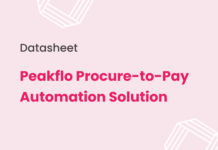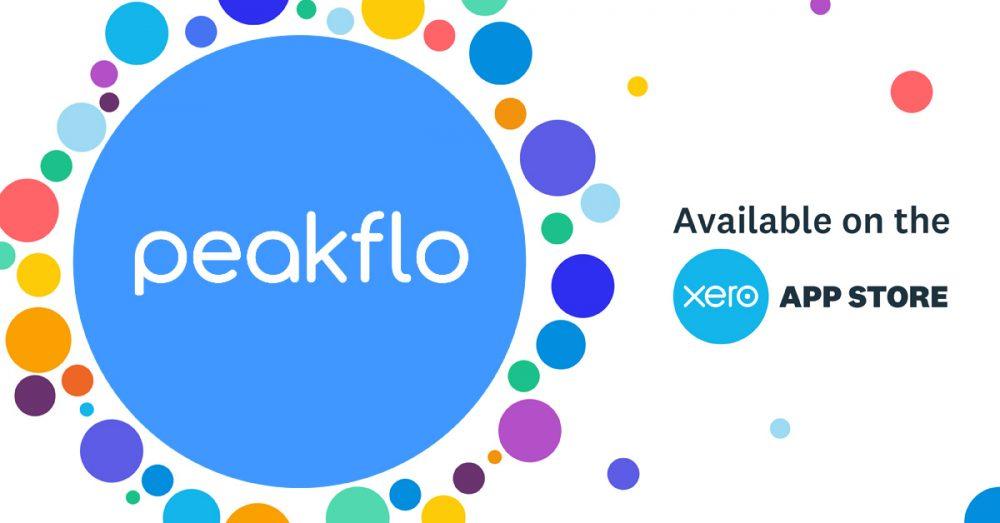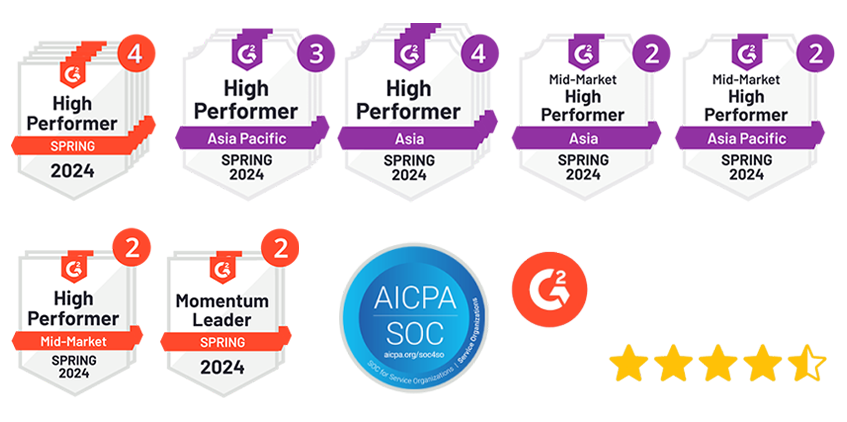AI agents have evolved far beyond simple chatbots and automated assistants. However, most people still underestimate their capabilities, treating them as glorified search engines rather than the sophisticated systems they’ve become. Today’s dynamic AI agents can make autonomous decisions, understand complex contexts, and adapt to changing environments without human intervention. The gap between what most businesses think AI agents can do and what they’re capable of represents one of the biggest missed opportunities in technology implementation.
This practical guide explores why dynamic AI agents are smarter than commonly believed and how you can leverage their full potential.
Why Dynamic AI Agents Are More Than Just Chatbots
The distinction between common chatbots and true dynamic AI agents marks a fundamental shift in technological capability. Unlike menu-driven or keyword-based chatbots that follow predefined scripts, dynamic AI agents operate with remarkable autonomy and intelligence.
From assistants to autonomous decision-makers
The evolution from simple assistants to autonomous decision-makers represents a transformative leap in artificial intelligence. Traditional AI assistants like Siri and Alexa function primarily as command-response systems, waiting for explicit instructions before taking action. In contrast, dynamic AI agents can operate independently, understanding broader contexts and taking proactive measures toward achieving goals with minimal human supervision.
This transition became possible through several breakthrough technologies:
- Large Language Models providing enhanced language understanding
- Reinforcement learning enables improvement through trial and error
- Multimodal data integration combining text, audio, and visual information
What truly distinguishes autonomous agents is their ability to:
- Decompose complex goals into actionable steps without explicit instructions
- Make decisions based on contextual understanding
- Maintain a persistent memory of past interactions
- Proactively suggest actions without being prompted
- Learn from successes and failures to improve performance
Gartner predicts that by 2028, at least 15% of day-to-day work decisions will be made autonomously through AI agents. This shift from reactive tools to proactive partners is already reshaping business operations. For example, Bank of America’s AI-driven virtual assistant has handled millions of customer requests, from simple account inquiries to complex loan applications.
How dynamic agents differ from traditional AI models
Traditional AI models follow defined paths based on pre-trained data and don’t deviate from them. They process prompts and return predictions without adjusting behavior during execution. AI agents, meanwhile, assess situations dynamically, make goal-driven decisions, and determine the best action sequence in real time.
The architectural differences are substantial. While standard models are reactive and start fresh with each new prompt, AI agents carry context across interactions, use memory to maintain continuity, and initiate processes without direct user commands. Additionally, static models require retraining to improve, yet AI agents learn continuously from their environment, refining strategies and responding to changes as they happen.
AI agents operate through a perception-decision-action cycle that allows them to interact with their environment and adapt over time. This cycle involves:
- Perception: Collecting data from the surroundings through various input mechanisms
- Decision-making: Analyzing information using deep learning, reinforcement learning, or rule-based logic
- Action execution: Implementing decisions and observing outcomes
- Learning: Using feedback to improve future performance
This continuous cycle enables dynamic AI agents to function autonomously across diverse applications, from robotics and healthcare to finance and customer service. Unlike traditional AI models that excel at specific tasks but struggle to generalize, AI agents actively recognize, memorize, and respond to changes in their surroundings.
Furthermore, agentic AI takes autonomous capabilities to new levels by using digital ecosystems of LLMs, machine learning, and natural language processing to perform tasks on behalf of users or other systems. This proactive approach stands in stark contrast to reactive generative AI systems that simply respond to user inputs.
Understanding the Role of Context in Agent Intelligence
Context serves as the invisible backbone of truly intelligent AI systems. When examining how AI agents make decisions, what truly separates exceptional systems from mediocre ones often comes down to their ability to understand and utilize context effectively.
What is context, and why does it matter
Context refers to all the background information relevant to a given data point or event. This encompasses the who, what, where, when, and why factors that add depth and meaning to otherwise unclear inputs. For AI agents, context might include user interaction history, time and location data, emotional tones, visual surroundings, or previous decision-making steps.
Consider a simple user message like “I’m not happy.” Without proper context, an AI agent cannot determine if this indicates a product failure, personal distress, or something entirely different. The absence of contextual understanding often leads to irrelevant responses, wasted time, and poor decision-making.
Context engineering—the practice of designing systems that determine what information an AI model sees before generating a response—has emerged as a critical discipline. This involves pulling together conversation history, user data, external documents, and available tools, then formatting them so the model can process them effectively.
The main challenge lies in working within context window limitations while maintaining coherent conversations over time. Your system must decide what’s most relevant for each request, typically through retrieval systems that find the right details when needed.
Types of context: static vs dynamic
Static context represents information that remains constant unless acted upon by an agent. Static environments are relatively predictable and stable, providing a straightforward setting for AI systems to operate in. Their characteristics include constancy, predictability, stability, and limited complexity. Chess is a classic example—pieces remain fixed until players make moves.
Conversely, dynamic context involves information that changes autonomously, regardless of agent actions. Dynamic environments create uncertainty because agents can’t always predict or control these changes. Characteristics include changeability, uncertainty, adaptability requirements, and increased complexity. Traffic conditions exemplify this type, as congestion levels shift due to accidents, construction, or rush hour patterns.
Another important distinction exists between hot and cold contexts:
- Hot context: Information immediately relevant to the agent’s current task, including active user goals, current messages, recent conversation turns, and session-specific preferences. These elements should be instantly accessible through in-memory storage or low-latency caches.
- Cold context: Information that’s useful but not immediately necessary, such as full conversation histories, deeper user profiles, archived interactions, or rarely used knowledge base entries. This data provides valuable background, but doesn’t need to be fetched synchronously on every request.
Examples of poor vs optimized context usage
Poor context usage often manifests as “hallucinations” when AI agents produce nonsense or irrelevant answers. These typically stem from biased data, missing background information, or failure to understand true user intent. For enterprises, even one such misstep can lead to lost revenue, damaged customer relationships, or embarrassing public relations incidents.
Consider a merchandiser trying to salvage a slow sales quarter. With poor context, they might receive only yesterday’s numbers. With optimized context, an AI agent can analyze real-time data, identify top-performing products, and suggest promotions that convert.
Optimized context implementation includes:
- Preloading critical information at session start to eliminate time-consuming lookups
- Tiered storage architecture, which organizes memory into layers based on access frequency
- Parallel processing that begins with hot context while retrieving cold context as needed
Companies implementing proper context engineering have reported significant improvements. According to research, businesses using Multi-Context Processing in their customer service chatbots have seen a 25% increase in customer satisfaction and a 30% reduction in response time. Additionally, Gartner predicts that by 2027, 75% of new analytics content will be contextualized through generative AI, enabling more dynamic and autonomous decision-making processes.
Essentially, context acts as a guardrail, helping dynamic AI agents connect questions to the bigger picture, whether that’s a customer’s purchase history or upcoming critical events.
5 Smart Tactics That Make Dynamic AI Agents More Effective
Implementing the right optimization techniques can dramatically enhance how AI agents perform their tasks. These tactical improvements focus on structural elements often overlooked yet critical for agent effectiveness.
1. Message labeling for relevance and permanence
Message labeling serves as a powerful organizational tool for AI agents, allowing them to categorize and prioritize information effectively. By implementing proper labeling strategies, businesses can boost first-call resolution rates by up to 35% and reduce call handling times by 40%. Task labeling enables agents to organize work systematically—for instance, a blog-writing agent might label its initial output as “First draft”. These labels create a structured framework for conversation management, making it easier to track progress and maintain context across multiple interactions.
2. Agent-specific context filtering
Context filtering ensures AI agents operate within appropriate boundaries by screening input and output content. This approach typically employs two mechanisms:
- Blocklists: Predefined sets of prohibited words or phrases that prevent certain topics from entering agent interactions
- Allowlists: Approved language sets that restrict agent responses to verified, safe content
This filtering technique prevents prompt hacking attempts while maintaining conversation quality. For optimal results, focus on guiding conversations rather than implementing overly strict rules that might render the agent unhelpful.
3. Optimized system prompt placement
Strategic placement of critical instructions within prompts significantly impacts agent performance. AI models pay most attention to information positioned at the beginning or end of prompts. When designing system prompts, explain the agent’s operational context, available resources, and functional limitations. Consistency across all prompt components—including tool definitions and operational parameters—creates a coherent framework for agent decision-making.
4. Redundancy reduction in RAG
Retrieval Augmented Generation (RAG) systems often suffer from redundancy issues that decrease efficiency. Naive RAG implementations frequently retrieve misaligned chunks or duplicate information. Advanced implementations eliminate redundant storage, making AI systems leaner and more efficient. Techniques like re-ranking retrieved passages and prompt compression can substantially improve context quality without expanding resource requirements.
5. Instant metadata and dual processing
Implementing dual processing systems mirrors human cognition, with Type 1 reasoning (intuitive/fast) and Type 2 reasoning (reflective/slow) working in tandem. This approach allows agents to narrow problem spaces more effectively, focusing cognitive resources where they deliver maximum impact. Simultaneously, automatic metadata extraction and tagging enable agents to organize information instantly, creating structured knowledge that supports more accurate and contextually relevant responses.
Designing Smarter Agents with Context Configuration
Behind every intelligent AI agent lies a carefully crafted configuration that determines how it processes and prioritizes information. This hidden foundation—context configuration—separates truly dynamic AI agents from those that merely function.
What is a context configuration?
Context configuration defines the rules governing how an AI agent manages information across interactions. Specifically, it determines what data the agent retains, what it discards, and how it prioritizes different types of information within its limited context window. Think of it as an agent’s memory management system that encodes variations across all possible agent contexts into simple dimensions.
Unlike static prompts, a well-designed context configuration adapts to changing situations. It functions as a critical component of your Agent Architecture, directing how context flows through the system. This structured approach to context engineering creates faster, more accurate, and more efficient AI agents while reducing token usage.
How to define agent-specific memory rules
Effective memory rules must be tailored to each agent’s specific role. For instance, a software development agent might need rules to:
- Retain the initial user question
- Preserve planning documents
- Forget conversation history except for the last code revision
- Maintain the last message in the chain
Memory configuration typically includes retention periods—ranging from 1 to 365 days—that define how long information remains accessible. Properly configured agents can store conversations within short-term memory (for immediate context) or long-term memory (for persistent knowledge across sessions).
Advanced systems also implement tiered approaches to memory, separating:
- Hot context: Immediately relevant information accessible through low-latency storage
- Cold context: Background information retrieved only when needed
Using configuration templates for scalability
Configuration templates serve as sophisticated blueprints that define agent behavior, capabilities, and integration patterns. These reusable frameworks contain pre-configured conversation flows, decision trees, and response patterns that teams can customize for specific business needs.
Templates enable non-technical users to modify conversation flows through visual configuration tools without requiring deep technical expertise. Consequently, organizations can scale their AI agent deployments rapidly across different departments or use cases.
Modern templates incorporate version control systems for tracking changes and enabling rollbacks when necessary. This approach provides the flexibility to experiment with different configurations while maintaining stable production environments. Through templates, organizations can also implement role-based access controls that ensure appropriate customization permissions across teams.
Real-World Use Cases of Smarter AI Agents
Real-world implementations of AI agents demonstrate their significant impact across various business functions. Organizations leveraging these intelligent systems report measurable improvements in efficiency, accuracy, and employee satisfaction.
HR assistants with role-based access
Advanced HR assistants now handle complex workflows through role-based access systems that protect sensitive information while streamlining critical processes. Virtual HR agents effectively resolve common employee questions about benefits, leave policies, and pay issues through conversational interfaces, notably reducing tickets and increasing satisfaction. Internal mobility agents examine skill profiles, performance history, and open positions to recommend personalized career opportunities employees might otherwise overlook. Moreover, onboarding agents coordinate tailored task lists, automate reminders, and adapt workflows based on role, region, and contract type. This approach has delivered impressive results—IBM’s AskHR tool, which automates over 80 common HR processes, resolves 10.1 million interactions annually, saving 50,000 hours and USD 5 million each year.
Customer service agents with dynamic toolsets
Customer service has evolved through AI agents equipped with dynamic capabilities that adapt to changing customer needs. These systems handle simple tasks like password resets and complex workflows requiring multiple integrated tools. Implementation of virtual agent technology increased customer engagement by 40% while slashing wait times from hours to just 33 seconds. These agents excel particularly in order tracking, technical troubleshooting, and personalized recommendations.
Multi-agent collaboration in software development
Multi-agent systems represent a significant advancement in collaborative AI, enabling decentralized, autonomous agents to work together on complex tasks. In software development, these systems assign specialized roles—some agents handle design, others manage testing, and additional agents conduct code reviews. Through this division of labor, each agent maintains autonomy while sharing partial knowledge about the environment. As a result, development teams can distribute expertise across specialized agents that other teams throughout the organization can reuse. This approach offers greater scalability since new agents can be integrated seamlessly as project requirements evolve. The collaborative structure supports both concurrent and sequential task execution with shared memory, ensuring continuous information flow.
Peakflo Agentic Workflow: Turning Intelligence into Action
Peakflo delivers a complete agentic automation suite designed for forward-thinking finance and operations teams. Unlike legacy automation tools, Peakflo leverages multi-agent orchestration—each agent working autonomously yet collaboratively to drive end-to-end efficiency.
Here’s how it works:
- Voice Agents handle calls, WhatsApp, and SMS for invoice collections, vendor updates, and customer queries in multiple languages.
- Browser Agents mimic human actions across web apps, automating approvals, data entry, and reconciliation across tools.
- Knowledge Agents instantly retrieve policies, SOPs, or contract terms to ensure decisions are made in context.
- Memory Agents retain historical interactions and transactional data, enabling personalized and intelligent follow-ups without repetition.
These agents power intelligent workflows—from PO matching and anomaly resolution to cash application—learning from each execution and adapting in real time.
With Peakflo, you’re not just automating tasks—you’re building a self-improving finance function. Book a demo today to explore how agentic automation can future-proof your operations.
Conclusion
AI agents represent a significant leap beyond traditional chatbots and basic AI models. Their ability to make autonomous decisions, understand complex contexts, and adapt to changing environments sets them apart as powerful business tools rather than simple assistants.
The gap between what most businesses think AI agents can do and what they’re actually capable of continues to represent one of technology’s biggest missed opportunities.
As we move deeper into 2025, organizations that recognize dynamic AI agents as strategic partners rather than simple automation tools will gain significant competitive advantages. The future belongs to those who understand that AI agents aren’t just smarter than commonly believed—they’re transformative when properly configured, contextually aware, and strategically deployed.










![Why AI Sales Calls Are Making Good Sales Reps Even Better [2025 Guide] ai sales calls](https://blog.peakflo.co/wp-content/uploads/2025/09/65168cf6-3001-4733-8cbc-12d5684cf449-218x150.webp)


































